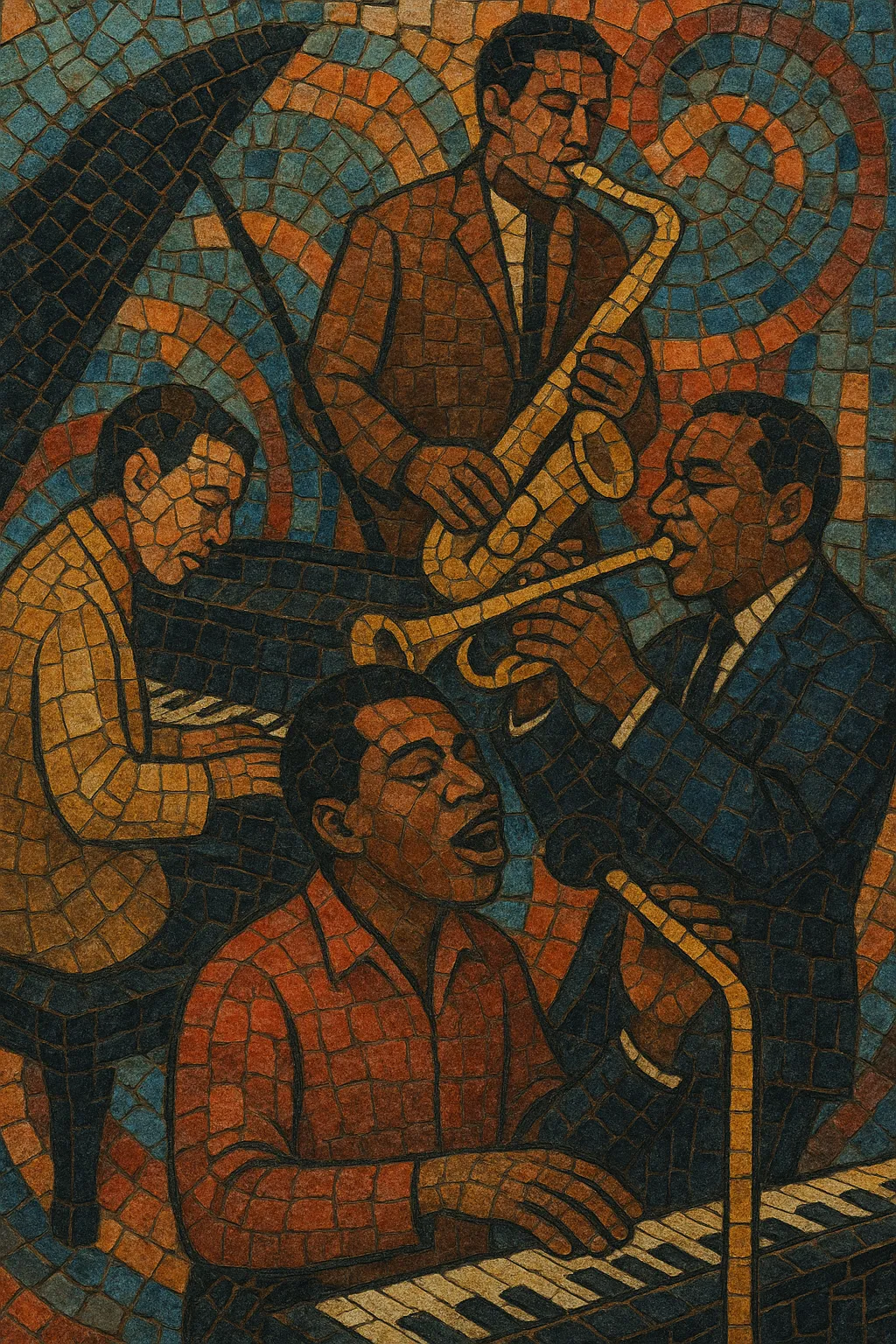
New Orleans R&B is a piano-driven, horn-rich strain of rhythm and blues that emerged in the late 1940s and flourished through the 1950s. It blends blues harmony with the lilt of Caribbean rhythms, the swing of jazz, and gospel’s vocal inflections, creating an irresistibly rolling groove.
The style is marked by triplet-based piano patterns, parade-inspired backbeats, syncopated horn riffs, and relaxed yet danceable shuffles. Its sound was defined by the city’s storied studio scene (notably Cosimo Matassa’s J&M Studio), visionary bandleaders and producers like Dave Bartholomew and Allen Toussaint, and charismatic singer-pianists such as Fats Domino and Professor Longhair.
Lyrically, New Orleans R&B favors good-time party themes, romance, and streetwise vignettes. Its warm, unhurried feel and rhythmic cross-pollination would prove foundational to rock and roll, soul, funk, ska, and swamp pop.
New Orleans R&B coalesced in the city’s clubs and recording studios as postwar jump blues, swing, gospel, and local parade rhythms met Afro-Caribbean currents. Pivotal figures included Professor Longhair, whose rhumba-boogie piano mixed tresillo/clave accents with blues forms, and producer-bandleader Dave Bartholomew, who codified the city’s horn-driven arrangements.
Cosimo Matassa’s J&M Studio became the hub where musicians, arrangers, and singers forged the idiom’s signature sound—earthy, roomy, and propelled by a supple backbeat. Early hits by artists like Fats Domino and Lloyd Price introduced the style nationally.
The 1950s saw New Orleans R&B dominate U.S. charts and dance floors. Fats Domino’s warm baritone and rolling triplet piano defined the genre’s feel, while Smiley Lewis, Shirley & Lee, and Huey “Piano” Smith delivered infectious singles powered by brass riffs and shuffling drums. The music’s rhythmic blend—shuffle swing plus Caribbean syncopation—made it instantly danceable and highly exportable.
Producers and arrangers (Bartholomew for Imperial; later Allen Toussaint) sculpted tightly crafted records with memorable hooks, call-and-response vocals, and concise horn charts.
As the 1960s arrived, Allen Toussaint bridged New Orleans R&B toward soul and, later, funk, shaping hits for Lee Dorsey and Ernie K-Doe. The stylistic DNA spread internationally: Jamaican sound systems absorbed New Orleans R&B records, laying groundwork for ska and, eventually, reggae. In the U.S., its grooves fed directly into early rock and roll, soul, swamp pop, and later swamp rock and funk.
New Orleans R&B remains a cornerstone of American popular music, celebrated for its singular blend of rhythmic ease and melodic charm. Its influence is heard in rock’s backbeat, soul’s horn voicings, funk’s pocket, and the Caribbean-inflected pulse of ska and reggae. The tradition continues via revivalists and city stalwarts who keep the second-line spirit alive.

